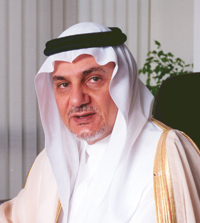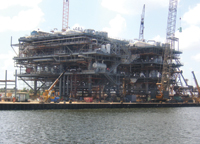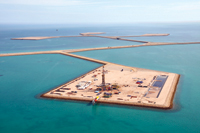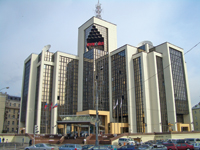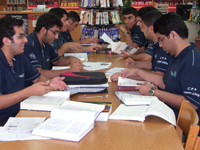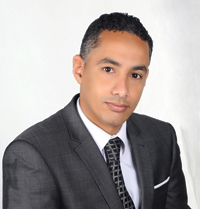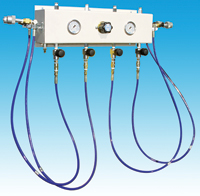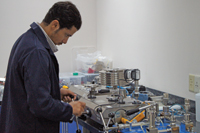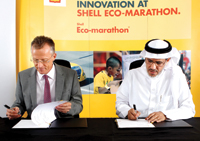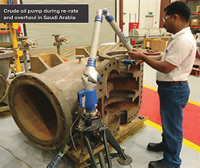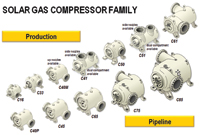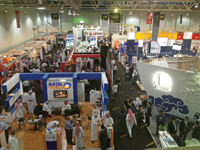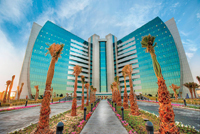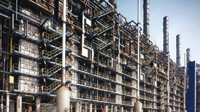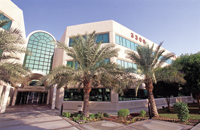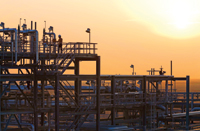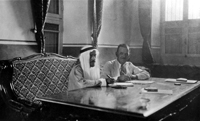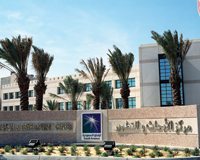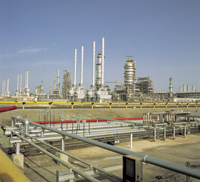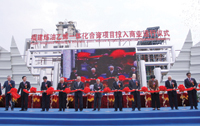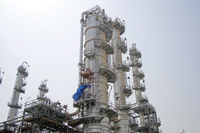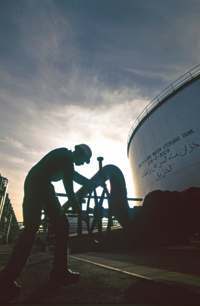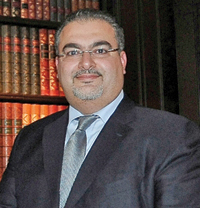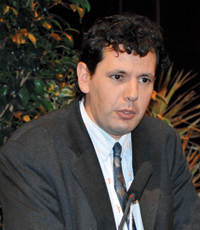
 Aramco ... clocking success year after year
Aramco ... clocking success year after year
STATE-OWNED Saudi Aramco, the world’s biggest oil company in terms of oil reserves and production, says it is on course to becoming the largest integrated energy and chemicals firm in the world by 2020.
More important, in socio-economic terms, Saudi Aramco already leads the globe’s national oil companies (NOCs) in helping its country build a strong middle class – the most credible guarantor of stability in any country in the world.
In its 2012 Annual Review, Saudi Aramco says in the past year it produced 9.5 million barrels per day (mbpd) of crude oil, 224,000 bpd of condensate and 10,720 million cubic feet per day (mmcfd) of raw natural gas. Its crude oil exports in 2012 averaged 6.9 mbpd. Its exports of refined petroleum products amounted to 345,000 bpd. Saudi Aramco’s crude oil output capacity is 12.5 mbpd, including its 50 per cent share of the Divided Zone (the other 50 per cent belongs to Kuwait).
Saudi Aramco president and CEO Khalid Al Falih says: “2012 was one of our most successful years, yet also one of our most challenging. During 2012 at Saudi Aramco, we responded to market conditions by producing crude oil at the highest level in our company’s history. Our distribution and marketing operations continued to reliably meet our customers’ needs.
“During 2013, we marked our 80th anniversary. During those eight decades, our reputation for reliability – for bringing energy to the world – has allowed us to become not only the world’s largest integrated energy enterprise, but also a global leader in terms of performance.
“Yet, we are also engaged in a major transformation of our business and our corporate culture – a transformation that will build upon our foundation of capability, leadership and innovation, and enable us to achieve our strategic intent of becoming the world’s leading integrated energy and chemicals company ahead of our 90th anniversary.
“We continue to unlock opportunities for our company and all of our stakeholders. The potential of our technology and talent to add to these opportunities in the future is almost limitless.
The kingdom is embarking on the boldest set of socio-economic and political reforms in the world’s Group of 20 (G20) powers – of which Riyadh is a key member. The reforms will result in socio-economic prosperity in Saudi Arabia unprecedented in the Greater Middle East (GME). A hint to this has been made in an IMF study on Saudi Arabia just published.
 |
|
Al Falih ... presiding over an ambitious |
The IMF says: “The Saudi fiscal position is very strong, with the lowest debt-to-GDP ratio and the highest fiscal balance among the G20 economies.” Noting record high oil revenues in 2012, the IMF adds: “Saudi Arabia has been one of the best performing economies of the G20 in recent years”. Its average rate of real GDP growth in 2008-12 having been the “third behind China and India”.
It is forecast that Saudi Arabia’s GDP, which in 2012 reached $683.8 billion (up 6.8 per cent from 2011), will reach $1.25-2 trillion by 2025. The size will depend on the extent of Saudi Aramco’s production of non-conventional petroleum (shale gas, tight oil and gas, ultra-sour gas, etc).
In its review, the Aramco says: “In just the last five years, our capital programme has quadrupled in size”. Al Falih had said in 2011 the NOC’s 2012-16 spending amounted to $125 billion and put the company’s oil exploration and production (E&P) investment to end-2017 at $35 billion.
The review says Saudi Aramco’s investments in integrating new petrochemical and refining projects in 2012 were key to boosting the company’s profitability, adding: “It is our refining, marketing and chemicals capacities that help us meet domestic energy demands in an efficient manner, while driving and enabling a vibrant energy services sector, and allow us to compete internationally in strategic high-growth markets with the industry’s best companies.”
Saudi Aramco has pledged to spend $35 billion over the next five years in oil exploration and production (E&P) as part of an effort to maintain capacity. The sum is an increase from previous pledges by Aramco to spend between $20-30 billion over five years to offset declining volumes from mature fields and sustain production capacity.
Besides, Saudi Aramco, seeks to become the largest producer of refined petroleum products including fuel and petrochemicals, according to Al Falih.
Al Falih says that Saudi Aramco plans to become the world’s single largest oil refiner within the next few years increasing its global refining capacity to 8 mbpd in 10 years. This compares to ExxonMobil’s 5.4 mbpd crude processing capacity by the end of 2012 – currently the largest processor worldwide.
Saudi Aramco is seeking to expand refining and petrochemical production to meet Saudi Arabia’s domestic demand and export products that can fetch higher prices than crude internationally. In the short term, Saudi Aramco seeks to turn its Satorp plant in Jubail, where the French company Total holds a 37.5 per cent stake, into the kingdom’s largest refinery on Arabian Gulf when it starts processing 400,000 bpd of Arab Heavy Crude this year.
Saudi Aramco operates refineries in Saudi Arabia, and abroad. The company operates four domestic refineries in Riyadh, Jeddah, Yanbu and Ras Tanura.
Aramco’s 400,000 bpd Satorp refinery, a JV with Total in Jubail which cost $9.6 billion, is due on stream in 2013. Its 400,000 bpd Yasref refinery at Yanbu, a JV with China’s state-owned Sinopec, is to begin operations in 2014 at the cost of up to $10 billion. Its 400,000 bpd refinery in Jizan, costing $7 billion, is due to start up in 2016. The $20 billion JV with Dow Chemical in Jubail, called Sadara, in 2015 will begin producing up to 300 chemical items. Its PetroRabigh refining/petrochemicals complex at Rabigh, a JV with Sumitomo Chemicals, is expanding its 400,000 bpd system at a cost of $10 billion. These are part of a wider integration drive. Saudi Aramco Trading in 2012 completed its first year of operations and sold over 725,000 bpd of products.
 |
|
Karan ... pumping precious natural gas |
Al Falih says the state giant plans to expand two of the country’s biggest oil fields. “We are expanding Khurais ... and we will be doing Shaybah,” he says.
Khurais, which came on stream in 2009, is being expanded from 1.2 mbpd to 1.5 mbpd, Al Falih says. Work will start this year on the 300,000 bpd upgrade and will be complete by 2016 or 2017.
Current production comes from Khurais, and two satellite fields, Abu Jifan and Mazalij. Aramco officials said in 2011 that the 27 billion barrel Khurais can pump up to 1.4 mbpd because it is “still at the beginning of its production life” and has virtually no water cut. The 1.2 mbpd nameplate capacity is the plateau rate that can be maintained over 30 years with a 30 per cent water cut.
Al Falih says Aramco will be expanding Shaybah from 750,000 bpd to 1 mbpd. That upgrade is scheduled to be on stream in 2017.
There have been active plans to push Shaybah to 1 mbpd since early 2008, when oil demand was surging and prices were soaring. Aramco had planned to bring the increment on stream by 2010 before it was shelved following the global financial crisis in mid-2008.
Saudi Aramco has begun pumping heavy crude from its giant Manifa oil field ahead of schedule and plans to ramp up production to 500,000 bpd soon, the company says.
Aramco started output at Manifa on April 10, saying it was three months sooner than planned – although senior officials had pencilled in the start-up for June. Industry sources had anticipated that the field could start early, as the water injection process, which typically begins six months before first oil, had begun in October.
Having just spent $10.3 billion in four natural gas projects, including development of two gas fields and construction of related treatment plants plus a 2,500 mmcfd processing complex, Saudi Aramco in 2013 began focusing on non-conventional petroleum resources.
The Saudi NOC has so far confirmed three prospective areas for non-conventional gas resources – in north-west of the kingdom, the southern part of the super-giant axis of Ghawar oilfields, and in the Rub Al Khali desert to the south where it has discovered condensate-rich shale gas.
Saudi Arabia is estimated to have over 645 trillion cubic feet (tcf) of shale gas alone. If tight oil and gas and ultra-heavy gas resources are added, the total for non-conventional resources would come to almost 900 tcf, excluding its 285 tcf of proven reserves of conventional gas.
The IMF says: “Saudi Arabia is playing a systemic role in the world economy by helping provide stability to the global oil market”. The fund notes: “Creating jobs for the growing Saudi population of working age is understandably a key priority for the government. Ultimately, increased employment of Saudis in the private sector will require reduced reliance on jobs in the public sector”. And Saudi Aramco is playing a major role in this respect.
Meanwhile, two pillars of the Saudi economy, Saudi Aramco and petrochemical giant Sabic, plan to jointly form a new firm that will invest across a wide range of the Saudi energy spectrum.
The Industrial Investment Corp (IIC) will be an independent company with a remit to financially back projects that support the needs of Aramco, Sabic and other firms in the energy space. One area of focus will be jump-starting the downstream conversion industry, which will increasingly procure and process the millions of tons of oil and chemicals both firms produce in the kingdom. Saudi Arabia is counting on this sector to diversify the economy and create jobs.
IIC will be owned 25 per cent each by Aramco and Sabic with the remaining 50 per cent held by the state investment vehicle Public Investment Fund.
The financial muscle of the firm is not known, but the shareholders expect it to be “very significant.”
The tie-up is still being discussed, but a decision should be made within a matter of months, Sabic chief executive Mohammed Al Mady says.
The two firms have been rumoured for years to be mulling joint projects, although Aramco’s unilateral push into the petrochemicals sector has limited the natural areas of cooperation. Sabic produced 55 million tonnes of petrochemicals in 2012, ranking it as one of the world’s biggest chemical firms.
Aramco aspires to join Sabic as one of the three-largest chemicals producers in the world by 2020, and is currently adding over $20 billion worth of new petrochemical capacity.
Aramco, known for its ability to manage megaprojects under tight deadlines and on budget, has increasingly been instructed by Saudi King Abdullah to take on projects in many non-oil sectors, stretching its manpower and focus. It also has a full slate of oil, gas and refining projects.
Falling output from fields in decline has resulted in Aramco’s aggressive strategy to increase output with enhanced recovery projects and new upstream exploration.



















































































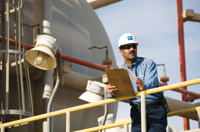
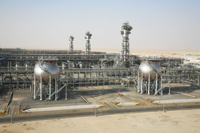



.jpg)
